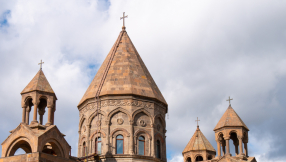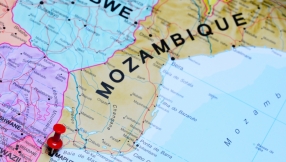
Pope Gregory I, known as Gregory the Great, was one of the most important popes, and his positive legacy is still felt today - not least in Britain. This is the story …
Who was Pope Gregory?
Gregorius Anicius, son of Gordianus was born about AD 540 in Rome, and was consecrated as pope on 3 September 590, when he became Pope Gregory. He is known for his administrative skills, writings, contributions to music and liturgy and his missionary drive. He called himself in Latin ”Servus Servorum Dei” (usually translated into English as “Servant of the Servants of God”), which is still used by Popes today, in official papal documents.
Gregorian Chants
Pope Gregory is credited with revising the liturgy and developing a form of plainchant or plainsong. This is a type of liturgical music where usually monks sang in unison in harmony without musical accompaniment. This type of chanting is the earliest known form of written music in the West. Today it is known as Gregorian Chanting in his honour, and can still be heard in Orthodox churches and Catholic monasteries. In recent years there has been a revival of interest in it, for example the Benedictine monks of Santo Domingo de Silos in Spain recorded an album called “Chant”, which was released by Angel Records in 1994, and went double platinum. You can listen to it on YouTube.
Pastoral Care
Around the year AD 590, Pope Gregory wrote a book called in Latin Liber Regulae Pastoralis (usually translated as the “Book of Pastoral Care” in English) which became a manual for bishops and priests across Europe, and later in England, which influenced how they understood their roles. Alfred the Great translated it, or had it translated for him, into Anglo-Saxon for all the bishops. Alfred the Great's translation into Anglo-Saxon, which is sometimes called Early English, is kept at the Bodleian Library in Oxford. It is the oldest surviving book written in English. It is so important that in May 2011, it was added to the UK’s Memory of the World Register, part of UNESCO.
Evangelisation missions
Pope Gregory saw the Church as “Catholic” in the sense of universal and worked to spread Christianity beyond the borders of the Roman Empire. He sent missionaries to Gaul, Lombard Italy, Spain, Africa. He also sent missionaries to England because after the fall of the Roman Empire much of southern and eastern Britain had reverted back to paganism under the English. The Venerable Bede, who is recognised as a distinguished historian, recorded the story in his “Ecclesiastical History of the English People”.
Mission to England
The story goes that before he became the Pope, Gregory was a monk in Rome. One day he was walking through the slave market when he encountered some male slaves which, unlike the others, were fair-skinned and fair-haired, and he asked where they had come from. The slave trader told him that they were Angles. Gregory thought to himself “Non Angli, sed angeli” (usually translated into English as "Not Angles, but angels!") and noted that it was a pity that they were not Christians. It is said that he wanted to go to England himself as a missionary, but the then Pope (probably Pelagius II), did not let him leave Rome. Later when Gregory himself became Pope he sent St Augustine and a delegation of forty monks on his behalf. St Augustine is often known as St Augustine of Canterbury to avoid confusion with St Augustine of Hippo.
The mission to England began in 597 AD, when they went to Kent, which is now a county but was then a kingdom. They met Queen Bertha, a Frankish princess who was already a Christian - and who had perhaps invited them. As part of Bertha’s marriage agreement, King Aethelbert permitted her to bring a chaplain, and have a chapel, which St Augustine used. In fact, her church - now called St Martin’s - is the oldest Christian church in England still in use.
After the conversion of the king, and then his kingdom, Canterbury became the base for the evangelisation of England. The site of that first church is now occupied by Canterbury Cathedral, and St Augustine is known as the first Archbishop of Canterbury, which remains the premier bishopric in the Church of England. One of the other monks who accompanied St Augustine was St Paulinus who helped to convert the Northumbrians and became the first Bishop of York, being the second centre of the Church in England, after Canterbury.
Legacy
Pope Gregory died on 12 March 604 AD and he was soon venerated as a saint, although he has never been formally canonised. In 1298, he was declared a Doctor of the Church by Pope Boniface VIII because of his important writings. Pope Gregory is considered one of the Early Church Fathers, and is one of only three popes to officially be called “the Great”, the other two being Pope Leo I (Leo the Great), and Pope Nicolas I (Nicholas the Great).
The Church of England
Pope Gregory’s decision to evangelise England laid the foundation for the English Church (called “Ecclesia Anglicana” in Latin) as a part of Christendom. Later when this separated from papal authority under Henry VIII it became the Church of England, but the Latin term Anglicana is still used in the adjective Anglican (from the Latin word for English from the word for Angle). Pope Gregory is sometimes known as the Apostle of the English, although he never set foot in England, because of his role in the conversion of the English people, although the title is also sometimes given to St Augustine himself. The Anglican Communion is now a major worldwide family of churches.
Commemoration
Pope Gregory is commemorated on different days in different traditions. Pope Gregory predates the Great Schism which split the Christian world into Catholic in the West and Orthodox in the East, so he is also remembered in the Orthodox world, which uses 12 March, the anniversary of his death in 604 AD. In Slovenia, St Gregory’s Day (Gregorjevo) has a special significance as a celebration of spring and love. The tradition is that people launch miniature boats on rivers, which are called gregorčki. St Gregory’s Day usually falls in Lent so in 1969, the Roman Catholic Church changed the day of commemoration to 3 September, the anniversary of his papal consecration in 590 AD, which is called the Feast Day of Saint Gregory the Great. This is the date also used by most Anglican churches if they remember him.
The collect for St Gregory’s Day is: “Merciful Father, who chose your bishop Gregory to be a servant of the servants of God: grant that, like him, we may ever long to serve you by proclaiming your gospel to the nations, and may ever rejoice to sing your praises; through Jesus Christ your Son our Lord, who is alive and reigns with you, in the unity of the Holy Spirit, one God, now and for ever.”













